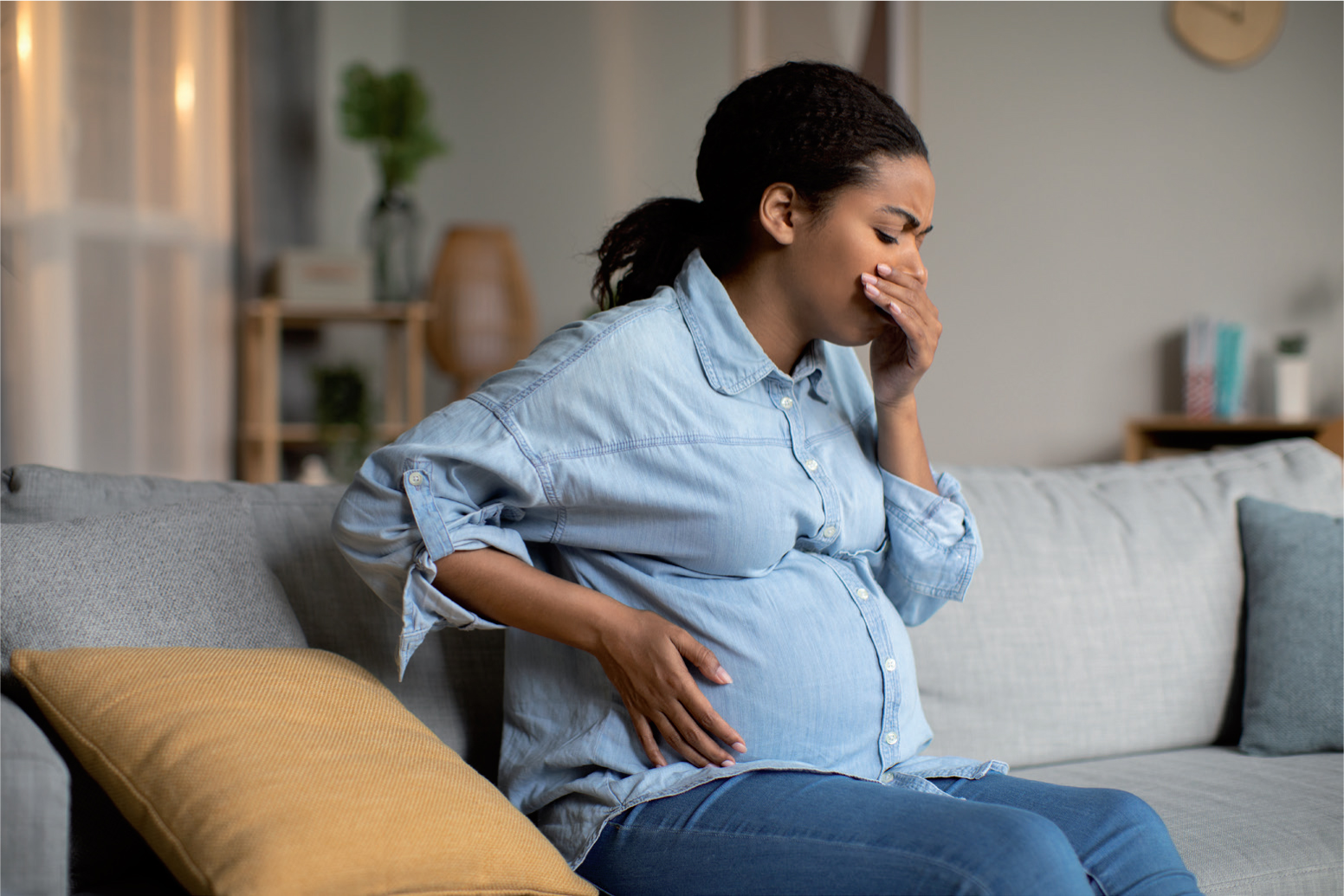According to Russell (2012), before the 1830s, the name most generally used for morning sickness was descriptive: ‘nausea and vomiting of pregnancy’, or ‘pregnancy vomiting’. By 1856, the new phrase ‘morning sickness’ had ‘become almost vernacular’, and by the mid-nineteenth century, morning sickness ‘lay, at times, on the borderline between the normal and pathological in medical discourse’ (Russell, 2012). However, Matthews et al (2015) note that morning sickness can occur at any time of the day, and that pregnant women experience nausea, vomiting and retching mostly in the first trimester, between 6 and 12 weeks, but which may continue to 20 weeks and persist after this time for up to 20% of women.
One of the most common features of pregnancy is nausea and vomiting, with nausea affecting 70–80% of the pregnant population, and additional vomiting experienced by around 50% (Heitmann et al, 2017). Hyperemesis gravidarum is less common, affecting 0.3–3% of pregnant women (Matthews et al, 2015) and is ‘characterised by excessive nausea and vomiting, leading to dehydration, electrolyte and nutritional disturbances, which often necessitates hospitalisation’ (Heitmann et al, 2017). A Norwegian study of 712 women with nausea and vomiting during pregnancy aimed to gauge the impact of the condition (Heitmann et al, 2017). It was reported that over 25% of women with severe nausea and vomiting during pregnancy considered terminating the pregnancy as a result of nausea and vomiting, and 75% considered avoiding future pregnancies (Heitmann et al, 2017).

As for the cause of nausea and vomiting during pregnancy, a Cochrane review (Matthews et al, 2015) cited evidence that while it was ‘thought to be associated with rising levels of human chorionic gonadotropin or oestrogens, the causes of nausea, vomiting and retching of pregnancy remain unknown’, although vestibular, gastrointestinal, olfactory and behavioural factors may determine how pregnant women respond to hormonal changes. Another suggestion was advanced by Taylor (2016), who noted that the gasotransmitters (a class of neurotransmitters) hydrogen sulphide and nitric oxide are mutually dependent on each other for their angiogenesis-related functions, and that ‘pregnancy-related requirements for increased endogenous hydrogen sulphide could create a temporary excess of sulphite, a hydrogen sulphide catabolite, which is toxic and can induce nausea.’
What interventions might be effective against nausea and vomiting during pregnancy? While a Cochrane review found ‘a lack of high-quality evidence to back up any advice on which interventions to use’ (Matthews et al, 2015), there has been an encouraging development. In December 2023, Fejzo et al (2023) reported that fetal production of growth differentiation factor 15 (GDF15), a hormone that acts on the brainstem, and maternal sensitivity to GDF15, both contribute substantially to the risk of hyperemesis gravidarum. The authors also showed that higher concentrations of GDF15 in maternal blood are associated with hyperemesis gravidarum.
In a commentary on this development, Hughes and Freathy (2023) pointed out that in 2018, genomic analysis of over 53 000 women had identified a link between the GDF15 gene and nausea and vomiting during pregnancy, covering the spectrum of severity. Despite GDF15 not having previously been considered to have a role in nausea and vomiting during pregnancy, it was a promising avenue for research as evidence suggested that GDF15 acts on a part of the brainstem involved in the control of vomiting, ‘and its overproduction had already been linked to chronic nausea and weight loss in people with cancer’ (Hughes and Freathy, 2023).
An important insight was gained when Fejzo et al (2023) found that the concentrations of GDF15 in the maternal bloodstream rise steadily over the first 12 weeks of pregnancy, but are higher on average in women who experience nausea, vomiting and hyperemesis gravidarum than compared to those who do not: ‘what makes the study by Fejzo et al a major advance is that it goes beyond establishing a correlation between GDF15 and [nausea and vomiting during pregnancy], and provides genetic evidence for a potential causal mechanism’ (Hughes and Freathy, 2023).
However, Fejzo et al (2023) are cautious, suggesting that ‘these results should be considered hypothesis generating and require replication in larger studies…[yet] our findings have obvious implications for the prevention and treatment of hyperemesis gravidarum. The acute rise in GDF15 which accompanies normal pregnancy is, we would argue, likely to be necessary, if not sufficient, for the causation of hyperemesis gravidarum’.
With more research options beckoning, one possibility for further exploration is the extent to which the sex of the fetus influences nausea and vomiting during pregnancy. For example, from an internet-based survey of 2543 mothers and 4320 pregnancies, Young et al (2021) found that those women who had carried a female fetus reported significantly higher frequencies of nausea and vomiting during pregnancy than those women who had carried a male fetus, and ‘in addition to carrying a female foetus, nulliparity, younger age, and being highly prone to nausea were identified as risk factors for greater frequency of first trimester nausea and vomiting during pregnancy’.
From early references to ‘morning sickness’ in the 19th century to the near identification of the cause and possible treatment of nausea and vomiting during pregnancy in the 21st century, one of pregnancy's common features may soon be on the decline.


